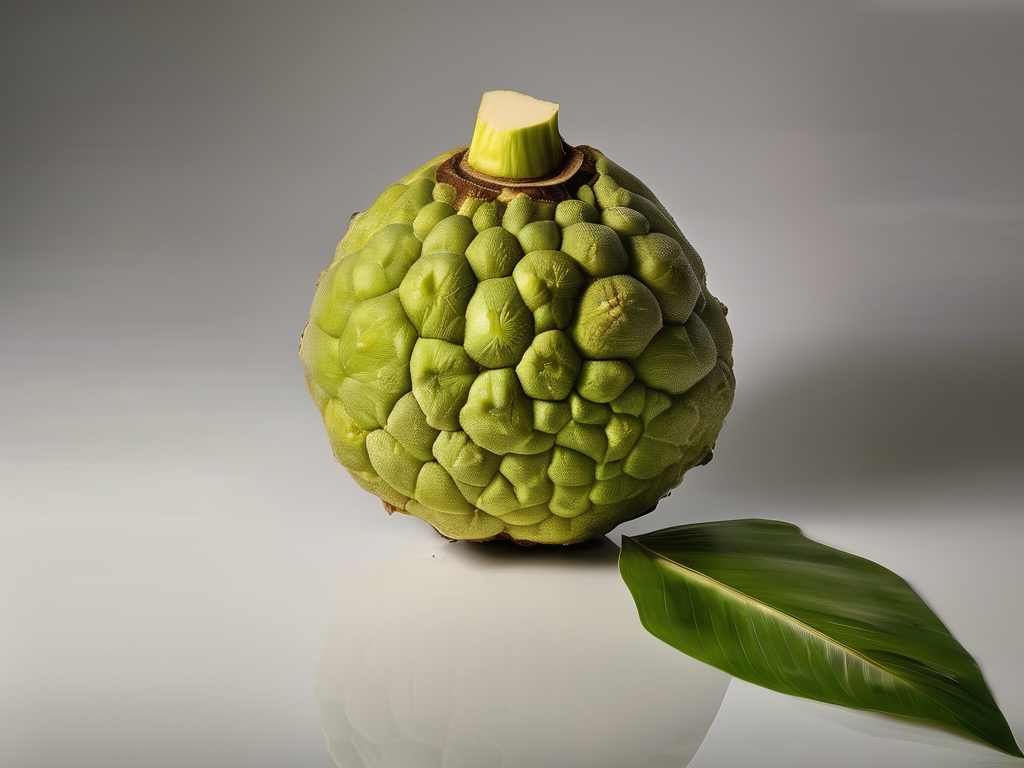
Is Your Breadfruit Still Good to Eat? How to Tell If It Has Gone Bad
Get Your Free Food Safety Cheat Sheet
30 most common foods with instant answers. Print it and stick it on your fridge—completely free!
Is Your Breadfruit Still Good to Eat? How to Tell If It Has Gone Bad
Breadfruit is a versatile and nutritious fruit that can be enjoyed in various dishes. Whether you cook it, roast it, or fry it, breadfruit makes for a delicious and filling meal. However, like any other fruit, breadfruit can go bad if not stored properly or if it's past its prime. In this blog post, we will explore how to tell if your breadfruit has gone bad and provide you with some tips on how to safely store it to extend its shelf life. (Breadfruit)
Signs of Spoiled Breadfruit
Visual Inspection
- Mold: If you notice any mold on the surface of the breadfruit, it has gone bad and should be discarded.
- Discoloration: Look for any dark spots, browning, or discoloration on the skin of the breadfruit, which may indicate spoilage.
- Wrinkling: A shriveled or wrinkled appearance is a sign that the breadfruit is no longer fresh.
Texture and Smell
- Softness: Press the breadfruit gently with your fingers. If it feels mushy or soft, it has likely gone bad.
- Strange Odor: A sour or rotten smell coming from the breadfruit is a clear sign that it is spoiled and should not be consumed.
Proper Storage Tips for Breadfruit
Room Temperature
- Store in a Cool, Dry Place: Keep breadfruit in a cool, dry area away from direct sunlight to prevent it from ripening too quickly.
- Avoid Refrigeration: Unlike some fruits, breadfruit should not be stored in the refrigerator as it can cause the fruit to spoil faster.
Extended Storage
- Freezing: If you have excess breadfruit that you want to save for later use, you can freeze it. Simply peel and cut the breadfruit into chunks, blanch them in boiling water for a few minutes, then freeze in airtight containers or freezer bags.
Preparation Tips
- Cook or Preserve: If you have breadfruit that is ripe and ready to eat but you can't consume it all at once, consider cooking it into a dish or preserving it through canning or pickling.
Conclusion
Knowing how to identify spoiled breadfruit is essential to ensure that you are consuming safe and fresh produce. By following the tips outlined in this blog post, you can extend the shelf life of your breadfruit and enjoy it in various meals. Remember to always inspect your breadfruit before consuming it and practice proper storage techniques to keep it fresh for as long as possible.
Next time you buy or harvest breadfruit, be sure to check for signs of spoilage and store it correctly to maximize its freshness and flavor.
Authoritative Food Safety References
These agencies and university labs inform every tip and health precaution we publish.
USDA FoodKeeper – Cold Storage Guidelines
Official refrigerator, freezer, and pantry timelines maintained by the U.S. Department of Agriculture.
Visit USDA FoodKeeperFDA Produce Safety Rule & Grower Guidance
Field-to-fridge handling practices that prevent contamination of fruits, vegetables, and leafy greens.
Visit FDA Produce SafetyCDC Foodborne Illness Prevention Hub
Surveillance-backed guidance on pathogens, symptoms, and steps to reduce foodborne illness risk.
Visit CDC Food SafetyUC Davis Postharvest Technology Center
University research detailing optimal storage atmospheres for produce after harvest.
Visit UC Davis PostharvestPenn State Extension – Home Food Preservation & Safety
Peer-reviewed extension bulletins on safe canning, chilling, and reheating practices.
Visit Penn State ExtensionQ: Can I still eat breadfruit if it has brown spots on the skin?
Q: How should I store breadfruit to prolong its freshness?
Q: Can I freeze breadfruit to extend its shelf life?
Q: Is it safe to eat breadfruit that has been left out overnight?
Get Your Free Food Safety Cheat Sheet
30 most common foods with instant answers. Print it and stick it on your fridge—completely free! Want more? Upgrade to the complete guide with 70+ foods.
Scan your food directly and get instant safety info using our AI-powered camera feature.